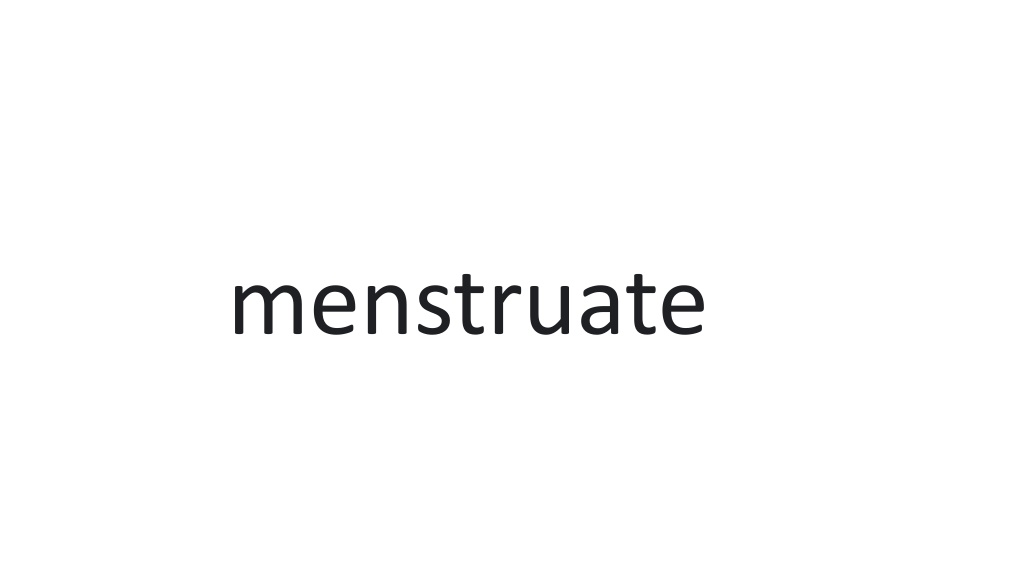Understanding the Menstrual Cycle: Phases and Hormonal Regulation
Menstruation is a natural process where the uterine lining sheds accompanied by bleeding in monthly cycles. The menstrual cycle consists of three phases - Follicular, Ovulatory, and Luteal - regulated by hormones like estrogen and progesterone. This cycle starts with menstruation, followed by the release of an egg and preparation for possible fertilization. Understanding these phases is crucial for reproductive health and overall well-being.
Download Presentation

Please find below an Image/Link to download the presentation.
The content on the website is provided AS IS for your information and personal use only. It may not be sold, licensed, or shared on other websites without obtaining consent from the author. Download presentation by click this link. If you encounter any issues during the download, it is possible that the publisher has removed the file from their server.
E N D
Presentation Transcript
Menstrual Cycle Menstruation is the shedding of the lining of the uterus (endometrium) accompanied by bleeding. It occurs in approximately monthly cycles throughout a woman's reproductive life, except during pregnancy. Menstruation starts during puberty (at menarche) and stops permanently at menopause. (Menopause is defined as 1 year after the last menstrual cycle.)
menstrual cycle is regulated by hormones. Luteinizing hormone and follicle- stimulating hormone, which are produced by the pituitary gland, promote ovulation and stimulate the ovaries to produce estrogen and progesterone. Estrogen and progesterone stimulate the uterus and breasts to prepare for possible fertilization.
The menstrual cycle has three phases: Follicular (before release of the egg) Ovulatory (egg release) Luteal (after egg release)
menstrual cycle begins with menstrual bleeding (menstruation), which marks the first day of the follicular phase. When the follicular phase begins, levels of estrogen and progesterone are low. As a result, the top layers of the thickened lining of the uterus (endometrium) break down and are shed, and menstrual bleeding occurs. About this time, the follicle-stimulating hormone level increases slightly, stimulating the development of several follicles in the ovaries. (Follicles are sacs filled with fluid.) Each follicle contains an egg. Later in this phase, as the follicle-stimulating hormone level decreases, usually only one follicle continues to develop. This follicle produces estrogen. Estrogen levels increase steadily.
ovulatory phase begins with a surge in luteinizing hormone and follicle-stimulating hormone levels. Luteinizing hormone stimulates egg release (ovulation), which usually occurs 16 to 32 hours after the surge begins. The estrogen level decreases during the surge, and the progesterone level starts to increase
luteal phase, luteinizing hormone and follicle-stimulating hormone levels decrease. The ruptured follicle closes after releasing the egg and forms a corpus luteum, which produces progesterone. During most of this phase, the estrogen level is high. Progesterone and estrogen ca use the lining of the uterus to thicken more, to prepare for possible fertilization.
Follicular phase The follicular phase begins on the first day of menstrual bleeding (day 1). But the main event in this phase is the development of follicles in the ovaries. (Follicles are sacs filled with fluid.) At the beginning of the follicular phase, the lining of the uterus (endometrium) is thick with fluids and nutrients designed to nourish an embryo. If no egg has been fertilized, estrogen and progesterone lev els are low. As a result, the top layers of the endometrium are shed, and menstrual bleeding occurs.
Ovulatory phase The ovulatory phase begins when the level of luteinizing hormone surges. Luteinizing hormone stimulates the dominant follicle to bulge from the surface of the ovary and finally rupture, releasing the egg. The level of follicle- stimulating hormone increases to a lesser degree. The ovulatory phase usually lasts 16 to 32 hours. It ends when the egg is released, about 10 to 12 hours after the surge in the level of luteinizing hormone. The egg can be fertilized for only up to about 12 hours after its release.
Luteal phase The luteal phase begins after ovulation. It lasts about 14 days (unless fertilization occurs) and ends just before a menstrual period. In this phase, the ruptured follicle closes after releasing the egg and forms a structure called a corpus luteum, which produces increasing quantities of progesterone
The progesterone produced by the corpus luteum does the following: Prepares the uterus in case an embryo is implanted Causes the endometrium to thicken, filling with fluids and nutrients to nourish a potential embryo Causes the mucus in the cervix to thicken, so that sperm or bacteria are less likely to enter the uterus Causes basal body temperature to increase slightly during the luteal phase and remain elevated until a menstrual period begins























